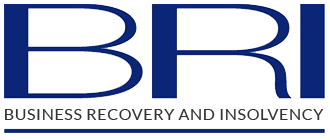Background
At BRI Business Recovery and Insolvency, one of the ways we help our clients is through Corporate Group Restructuring. Within this case study we will be discussing an example of how this works and how we helped.
BRI was approached by an accountant and tax advisor who dealt with a Group that consisted of one holding company and two 100% owned subsidiary companies. This is a common structure with a view to protecting a property asset in the event that the trading company fails.
Holding Company and Trading Company
The holding company provided management services to both subsidiaries and invoiced these on a monthly basis.
The trading company was in the manufacturing industry and had been placed in creditors’ voluntary liquidation. It owed significant amounts to both the holding company and the property company.
Property Company Assets
This had one saleable asset which was a commercial property. A sale and purchase agreement had been signed although the “long stop date” for completion within the terms and conditions had lapsed.
Costs had also been incurred in relation to a new site for the construction of new commercial premises. Partly due to non-payment of suppliers, all construction works had effectively ceased. A contract had also been entered into for the manufacture of commercial building at a plant based overseas.
Property Company’s Financial Position
Rent arrears with the trading company had adversely impacted cash flow to the extent that payments to suppliers could not be made as and when they fell due. As a result, some creditors were looking to take further action to recover amounts owed.
However, when assets were shown at market value, the company was solvent in that all creditors would be repaid in full.
What Was BRI’s Remit?
BRI’s remit was to find a solution which resulted in the best return for creditors of the property company and, if possible, for members of the holding company as well. Therefore, impacts for the “Group” as a whole required consideration. This is where our service Corporate Group Restructuring is utilised.
Why Were Professional Advisors Required to Implement Corporate Group Restructuring?
At the outset, it was clear that a number of professional advisors needed to work collaboratively to deliver the best possible outcome for all key stakeholders.
With regard to each site, specialist agents were appointed by the directors who advised that:
- Directors should proceed with the sale to the existing purchaser
- Directors should not complete the construction of the new factory premises and should abandon this project
Accountants and tax advisors provided advice and assistance:
- To disband the VAT Group
- On the option to tax as part of the existing sale and purchase agreement
- Recovery of VAT on professional fees incurred
- In submission of VAT bad debt relief claims by one subsidiary and holding company
- Meeting all filing requirements for Companies House and HM Revenue & Customs) for one subsidiary and holding company
Lawyers were also instructed to advise on monies due under the terms of a contract entered into with a commercial building manufacturer together with advice on the effect of any insolvency on the signed sale and purchase agreement.
What Was BRI’s Involvement in Corporate Group Restructuring?
BRI liaised closely with the directors together with their appointed professional advisors to implement the overall Corporate Group Restructuring strategy.
BRI drafted an Estimated Outcome Statement (“EOS”) which set out the likely outcome for an informal arrangement together with a formal insolvency process. This demonstrated that the best outcome for both creditors and members of the holding company was an informal arrangement.
However, this solution could only be successful with the support of all creditors. With directors’ agreement, BRI:
- Telephoned key creditors to explain how their support would ensure being paid in full
- Kept creditors informed regarding the sale process
- Responded to creditor queries
- Arranged insertion of an advertisement in The Gazette
- Agreed, vouched and verified claims on directors’ behalf and sought supporting claims documentation where required
Who Benefitted From the Informal Arrangement?
Stakeholders of the holding and the property company benefitted from:
- Reduced costs of the chosen informal arrangement meaning creditors were paid in full
- Advice and assistance from a team of professionals working collaboratively for the best possible outcome
- Increased asset realisations due to the strategy followed
